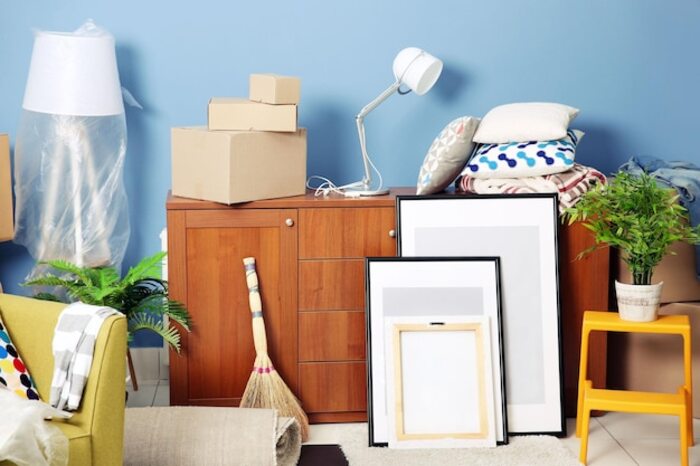Make your move an opportunity to redefine your space.

Make your move an opportunity to redefine your space. Every change of home is more than just transporting your belongings; it’s the perfect time to rethink how you want to live. With good planning and an effective checklist, you can transform this stressful experience into an exciting journey toward a new beginning. Discover how to make your move an occasion to create an environment that truly reflects your style and needs.
The importance of evaluating your belongings before moving.
Evaluating your belongings before a move is a crucial step that can make the difference between an overwhelming experience and a smooth process. Many times, we accumulate objects that we no longer use or that do not align with our vision of a new home. By taking the time to review each item, you not only reduce the physical burden you will have to transport but also give yourself the opportunity to reflect on what you truly value. This act of selection allows you to get rid of excess and keep the pieces that add meaning to your life, turning your move into a personal curation exercise.
Additionally, assessing your belongings is an excellent opportunity to inspire how you want to redefine your space. You may find furniture or decorations that can be restored or reused in innovative ways in your new home. You can also open yourself to the idea of donating or selling those items in good condition that you no longer need; this not only frees up space but can also benefit others. By the end of the process, you will arrive at your new home with a lighter emotional and physical load, allowing you to start this new chapter with clarity and purpose.
2. How to create an action plan for the move
Creating an action plan for your move is essential to make this process an organized and positive experience. Start by establishing a clear timeline that outlines each stage of the move, from the initial preparation to unpacking in your new home. Break tasks into manageable segments; for example, assign specific days for packing rooms, getting rid of unnecessary items, and coordinating with moving services. A checklist will help you stay on track and ensure that you don't forget important aspects, such as changing your address or transferring utilities.
It is also essential to involve all household members in the planning. This will not only lighten the workload but will also allow everyone to express their wishes about how they want the new space to be. Organize brief meetings where everyone can share ideas about furniture layout and decoration. By doing so, you will foster a sense of shared ownership in the new home, which can make the transition smoother and more enjoyable for everyone. Thus, by creating a detailed and collaborative action plan, you will transform your move into an opportunity to redefine your space according to your true needs and tastes.
3. Defining the purpose of each room in your new home
Defining the purpose of each room in your new home is essential to maximize the functionality and comfort of the space. Before you start unpacking, take a moment to reflect on how you use each area in your daily life. For example, if you work from home, consider designating a room or a quiet corner as an office. If you enjoy hosting guests, make sure your living room or dining room is designed to promote socializing. Having clarity about the activities you want to carry out in each space will allow you to organize and decorate more effectively, ensuring that each room fulfills its intended function.
Additionally, by defining the purpose of each room, you can make the most of the available square meters. A small room can be transformed into a cozy reading nook or a versatile study with some creative adjustments. Also consider flexibility; for example, a living room can function as an entertainment area during the week and become a cozy extra bedroom when needed. This duality not only saves space but also reflects a more organized and harmonious life. By the end of the process, you will have a home where every corner aligns with your needs and personal style, thereby creating a warm and inviting atmosphere that truly encourages enjoyment.
4. Practical ideas for getting rid of excess: donations and sales
A move is the perfect opportunity to evaluate what you really need and what you can let go of. Accumulation of items over time can lead to excess that only takes up space and complicates your daily life. Before packing, consider doing a thorough review of your belongings. Create three categories: keep, donate, and sell. Items in good condition that you no longer use can be valuable to others; thus, in addition to freeing up space in your new home, you will contribute to a noble cause by donating them to local organizations or community shelters.
If you prefer to get financial return for your items instead of just donating them, organize a garage sale or use online platforms to sell them. This will not only help you get rid of the excess, but it can also provide you with a small extra income that you could use to decorate your new space or buy what you really need. At the end of the process, you will enjoy not only a clearer and more organized home, but also a rewarding feeling knowing that you have done something good for others while redefining your own environment.
5. Setting a realistic budget for your move
Establishing a realistic budget for your move is a fundamental step that will allow you to make informed decisions and avoid unpleasant surprises. Start by making a list of all the possible expenses involved: from renting vehicles and hiring professional services to the cost of supplies like boxes, tape, and packing materials. Don't forget to include a category for unexpected expenses, as additional costs can always arise during the process. Having a clear view of your finances will help you manage your money better and stay within the set limits.
In addition, when setting a budget, you have the opportunity to prioritize your needs and wants. Ask yourself which aspects are essential to you in this new stage: do you need to invest in new furniture or can you reuse what you already have? Do you want to allocate part of the budget to improve the decor or make small renovations? By answering these questions, you can allocate adequate resources to each area, ensuring that your new home is an authentic reflection of your personal style without compromising your financial stability. Remember that planning ahead not only reduces stress but also allows you to enjoy the moving process and the redefinition of your space more.
6. Strategies for packing efficiently and with organization
Packing for a move can seem overwhelming, but with the right strategies, you can do it efficiently and organized. Start by sorting your belongings into categories: what you need, what you can donate or sell, and what you really don't want to take with you. This will not only make the packing process easier but also allow you to get rid of unnecessary items that take up space in your new home. Use labeled boxes for each category and make sure to include a detailed inventory to know exactly what you are taking to your new space.
Once you have sorted your belongings, it's time to pack smartly. Use appropriate packing materials such as bubble wrap, blankets, and reinforced cartons to protect your more fragile items. When packing, place the heavier objects at the bottom of the boxes and the lighter ones on top to avoid damage. Additionally, consider packing by rooms; this will make organizing in your new home much easier. Upon arriving at your new house, you will have a clear system for unpacking and starting to reconfigure your space according to your needs and personal style.
7. Decoration: creating harmonious environments from the start
Decoration is one of the keys to transforming a new space into a true home. When moving, you have the unique opportunity to rethink not only how your belongings will look but also how you want them to make you feel. Consider the colors, textures, and styles that resonate with you the most. Opt for palettes that promote tranquility or energize the environment, depending on your lifestyle and needs. For example, if you are looking for a corner of peace, soft tones and natural elements can be your best allies. If you prefer dynamism, consider vibrant accents that bring life to each room.
Additionally, pay attention to the arrangement of furniture and lighting; these aspects are fundamental to creating harmonious environments. A well-thought-out layout can open up spaces and improve flow between rooms. Experiment with different arrangements before settling on a final one; this can help you better visualize how you want to live in your new home. Likewise, do not underestimate the power of natural light: maximizing its entry can make any space feel more inviting and spacious. With these tips in mind, your move will become the first step toward a customized environment for you and your loved ones.
8. Adapting the design to your new family or work needs
When moving to a new home, it is the ideal time to assess the needs of your family or your work environment. You may have grown in number of members or your work responsibilities have changed; in any case, these transformations can significantly influence how you should organize your space. Think about functionality: do you need an additional room for a new family member? Or perhaps a dedicated area for remote work that allows you to focus and be more productive? Adapting the design to your new circumstances not only optimizes the use of space but also helps create a more harmonious environment that aligns with your current lifestyle.
Additionally, consider aspects like comfort and aesthetics when redefining your home. The arrangement of furniture can facilitate family interactions or improve work dynamics. For example, if you have small children, creating a safe area where they can play while you work may be crucial. Similarly, if you have started to receive visitors more frequently due to work or social changes, you might want to consider a comfortable and inviting social area. Remember that every corner should reflect who you are now and what you need to thrive both at home and at work. This adaptation will not only make your new space more functional but also more personal and inspiring.
9. Tips for choosing the ideal location within your new space
When you move to a new space, the location of each element is crucial to maximize both functionality and comfort. Before deciding where to place your furniture and decorations, carefully observe the natural light that enters each room at different times of the day. Areas with good lighting are ideal for creating cozy environments, while darker spaces can benefit from a light color palette and mirrors that amplify the light. Also consider how the different areas flow into each other; an open design can facilitate family interactions, while more private zones can be perfect for relaxation.
The arrangement of furniture should cater to your daily habits and lifestyle. If you enjoy hosting visitors, prioritize a comfortable and accessible social area; if you work from home, make sure to have a quiet and well-organized space to concentrate. Additionally, think about storage: place shelves or cabinets in strategic locations to keep clutter to a minimum and facilitate access to what you need frequently. Listening to your own needs when choosing the location of each item not only optimizes your space but also creates a home where you feel truly comfortable and happy.
10. The importance of maintenance and renovation after moving.
Post-move maintenance and renovation are essential to ensure that your new home not only looks good but also functions optimally. Once you have settled in and your belongings are in place, it is the ideal time to assess the condition of the spaces. From a thorough cleaning to checking electrical installations and plumbing, this process can help identify issues that could become more serious inconveniences if not addressed. By prioritizing maintenance, you ensure a safe and welcoming environment from the start.
Renewal also plays a crucial role in this process. This is your time to update elements that you might not have liked in your previous home or to implement changes that better reflect your personal style. Consider small improvements like painting walls, changing curtains, or even reconfiguring furniture. These actions not only revitalize the space but also allow you to create an environment where you can truly relax and enjoy every corner. Remember that every detail matters; by taking the time to care for and renew your new home, you are investing in a place where you can build meaningful memories.



